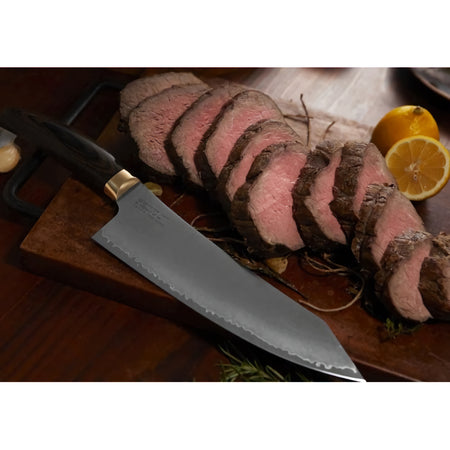A good Japanese knife can last for decades if properly maintained. Sharpness doesn't stay sharp by itself, but requires regular maintenance and proper use. Here are the most important tips to keep your kitchen tools in top shape.
1. Maintaining sharpness in everyday life
It is worth keeping a Japanese knife sharp with daily use . The best tool for this is a ceramic sharpening rod , such as the MAC SR-85 . Regular light maintenance sharpening will quickly restore the cutting edge and reduce the need for larger sharpening operations.
2. Actual sharpening with a water whetstone
When maintenance sharpening is no longer enough, it's time to switch to a water whetstone.
-
A 1000–3000 grit whetstone is suitable for basic sharpness.
-
For finishing, it is recommended to use at least a 3000 grit stone.
-
Sharpening should be done calmly and at the right angle to keep the blade smooth.
Alternatively, you can also use a Rolling Sharpener , which is an easy solution for the home user. Manufacturer-specific tools, such as the Yaxell sharpener , are also good choices.
3. Drying and storage
-
Wash the knife by hand immediately after use.
-
Always dry immediately with a soft cloth.
-
Never put the knife in the dishwasher – the heat and detergents will damage the blade and handle.
-
Store the knife in a holder, magnet or protective case, not loose in a box.
4. What to avoid?
Even the best Japanese knife can become dull or damaged if used incorrectly. Remember:
-
Do not cut frozen food or bones – the blade may splinter.
-
Always use a wooden or plastic cutting board, not glass or stone.
-
Do not leave the knife soaking in water.
Summary
With proper maintenance, a Japanese knife is an investment that will last for generations. Regular ceramic maintenance sharpening , proper water whetstone sharpening or a quality Rolling Sharpener will ensure sharpness. When you also remember to dry and use it properly, your knife will serve you for decades.
👉 See our selection of knife sharpening tools and always keep your tools in top condition.


